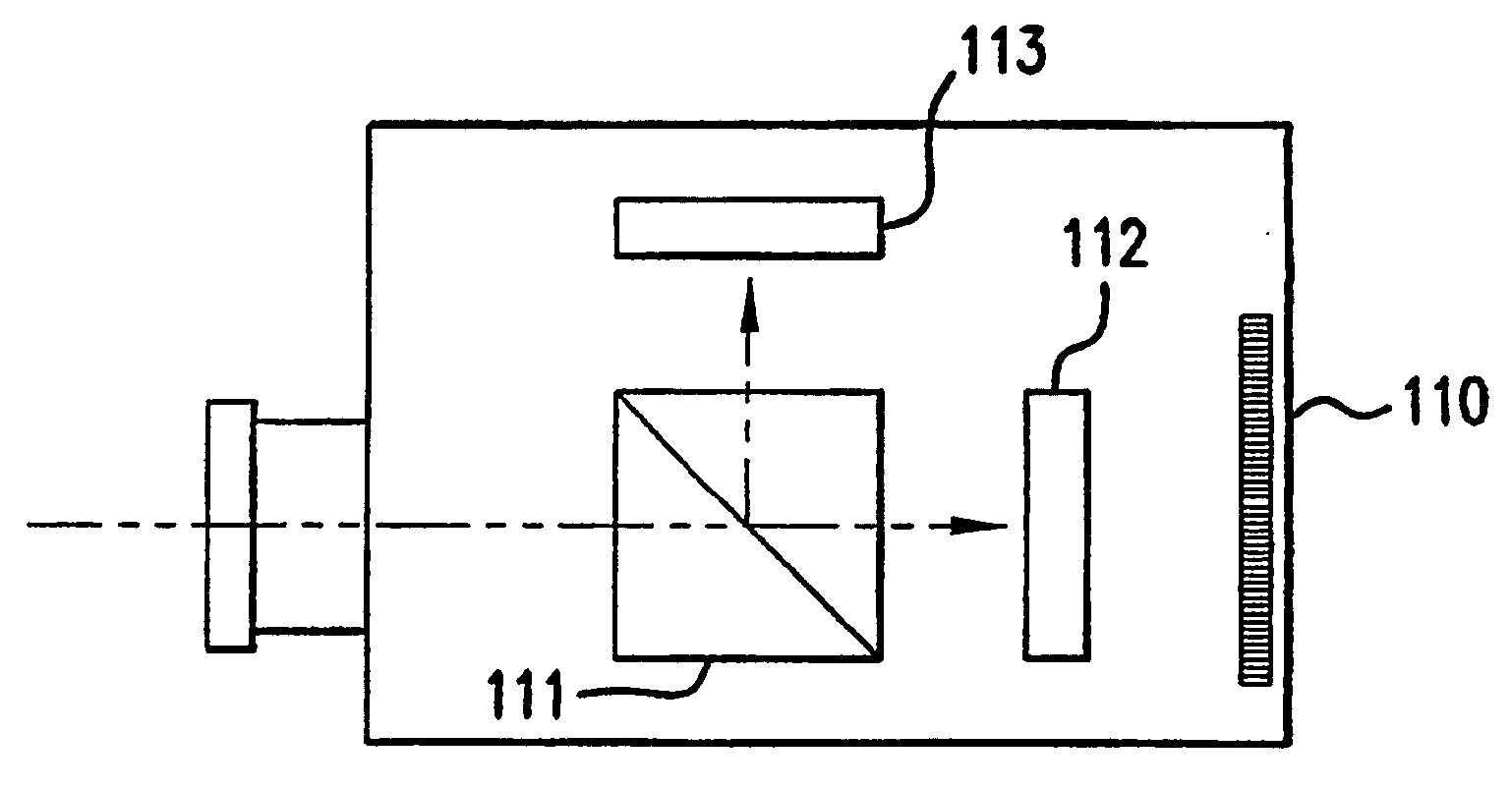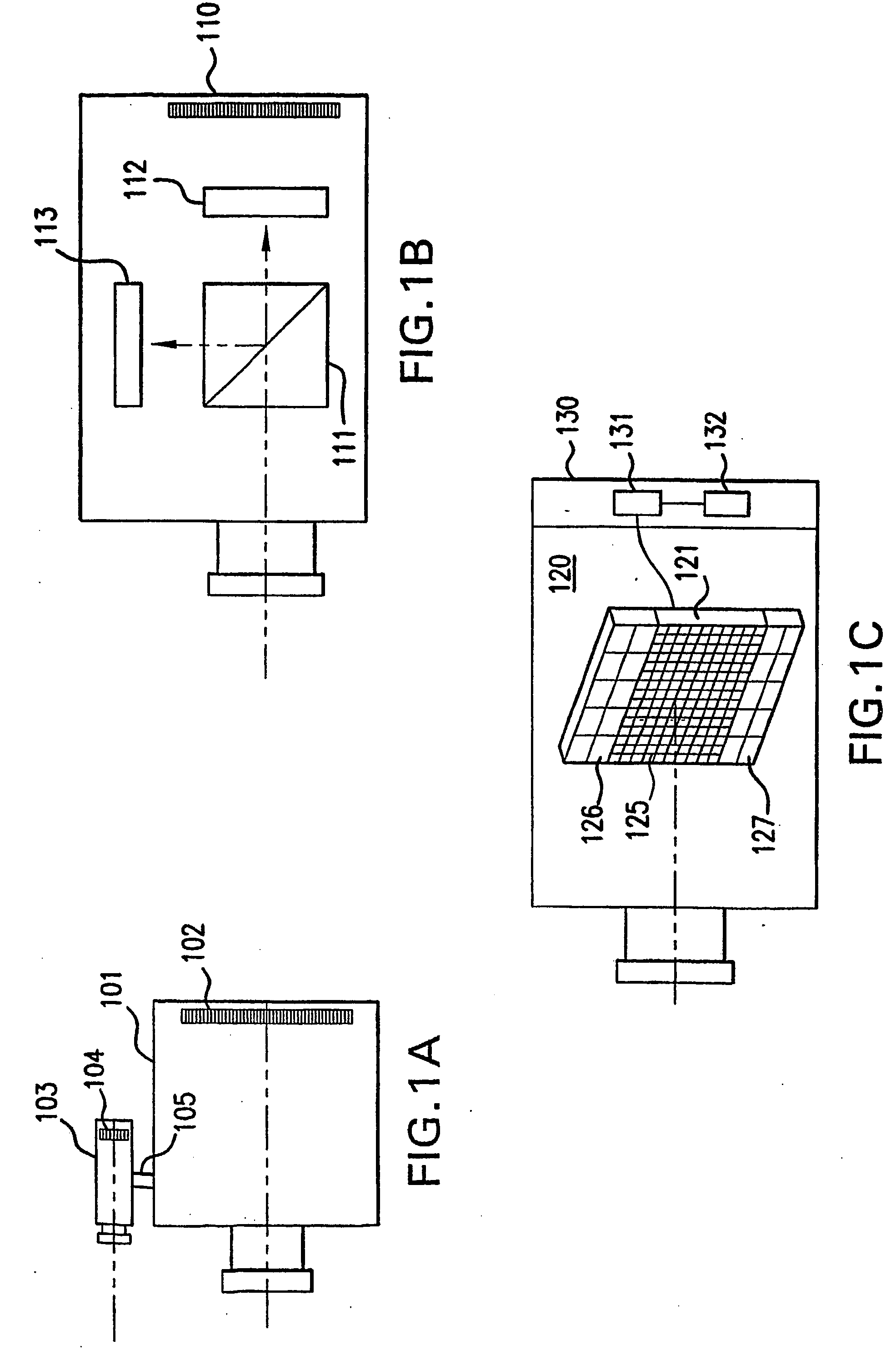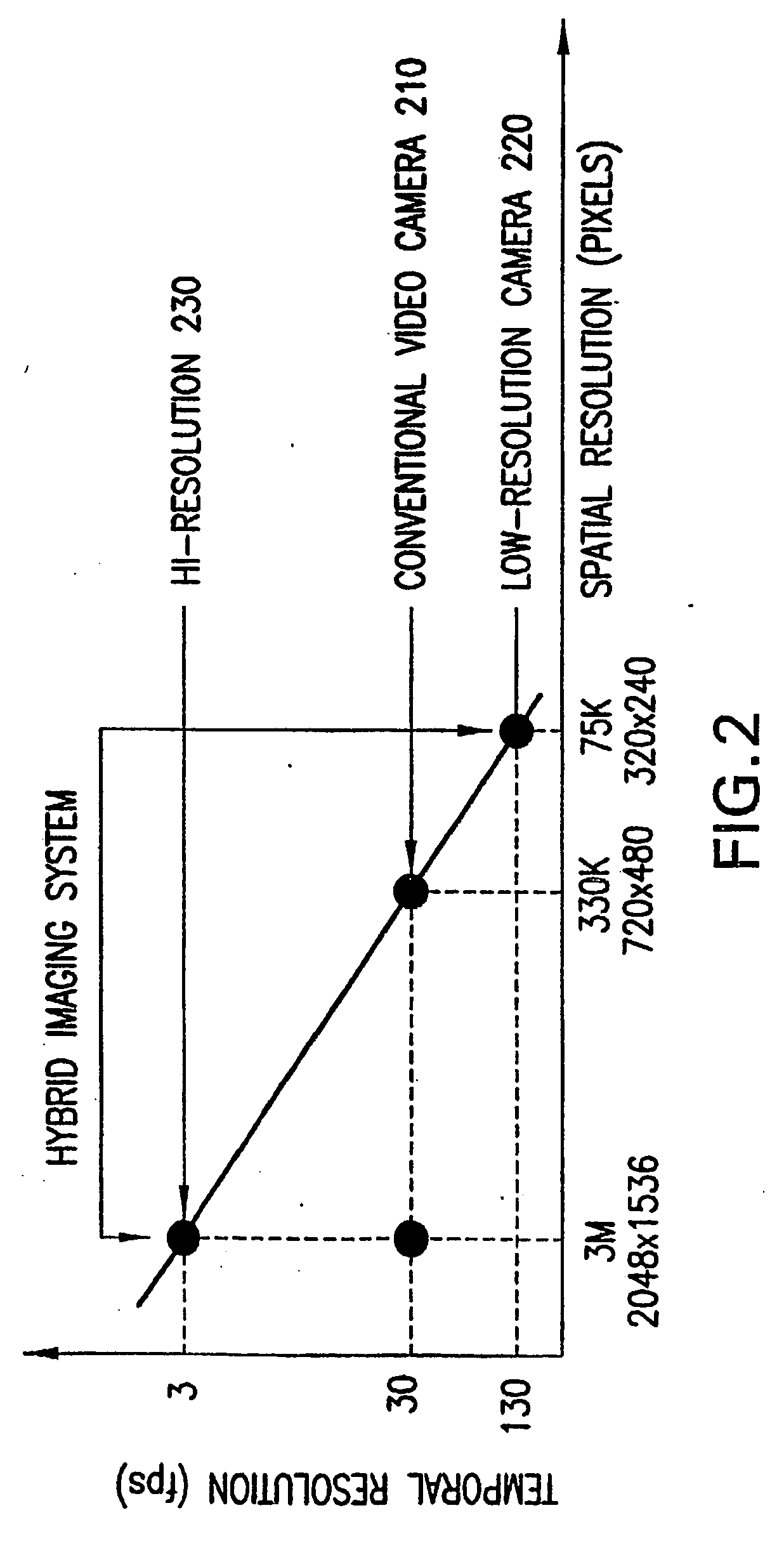Systems and methods for de-blurring motion blurred images
a motion blurred image and motion blur technology, applied in the field of systems and methods for deblurring motion blurred images, can solve problems such as blurred images, camera shake, and common motion blur due to camera shak
- Summary
- Abstract
- Description
- Claims
- Application Information
AI Technical Summary
Benefits of technology
Problems solved by technology
Method used
Image
Examples
Embodiment Construction
[0038] Referring to FIGS 1(a)-(c), exemplary hybrid camera systems in accordance with the present invention are shown. Each system includes a primary image detector for capturing an image of the scene, as well as a secondary detectors for capturing information useful for correcting blurring introduced into the image due to camera motion.
[0039] The embodiment shown in FIG. 1(a) uses two cameras 101, 103 connected by a rigid member 105. Camera 101 is preferably a high-resolution still camera, and includes the primary detector 102 to capture an image of a scene. Camera 103 is preferably a low-resolution video camera which includes a secondary detector 104.
[0040] The secondary detector 104 is used for obtaining motion information, and therefore must capture a minimum of two frames of digital video information in order to provide such motion information. Preferably, fifteen or more frames are captured during the integration time of camera 101. While the embodiment shown with reference ...
PUM
 Login to View More
Login to View More Abstract
Description
Claims
Application Information
 Login to View More
Login to View More - R&D
- Intellectual Property
- Life Sciences
- Materials
- Tech Scout
- Unparalleled Data Quality
- Higher Quality Content
- 60% Fewer Hallucinations
Browse by: Latest US Patents, China's latest patents, Technical Efficacy Thesaurus, Application Domain, Technology Topic, Popular Technical Reports.
© 2025 PatSnap. All rights reserved.Legal|Privacy policy|Modern Slavery Act Transparency Statement|Sitemap|About US| Contact US: help@patsnap.com



